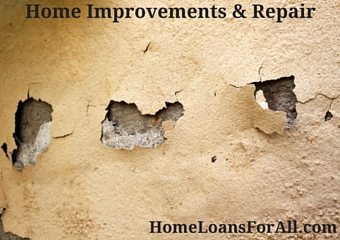Home Improvements & Taxes
When we bought our first house, it was perfect. Well, except for the 40-year-old heater. And the green kitchen with beige appliances circa the 1970s. And the creepy basement. (But otherwise perfect.)
Over the years, we made a number of improvements. We also made a number of repairs. We replaced the roof, added a powder room, and replaced the front porch. We painted walls and swapped out windows and doors. Yet, when we sold our house a few years ago, I still had a list of home improvements that we never got around to doing. We never did refinish the basement or knock out the kitchen wall. I never got a new master bath. Time, money, and resale value were all factors in deciding how to prioritize repairs and improvements to our home.
When you make any repair or improvement to your house, you can guarantee an immediate hit to your wallet. However, repairs and improvements are characterized and classified in different ways and can lead to bigger breaks down the road when your home is on the market and competing against other Phoenix, AZ, real estate listings, for instance. Here are a few rules for home improvements and taxes and how it may lead to tax breaks, and which ones may just break the bank.
What’s the difference between a repair and an improvement?
It’s important to know the difference between repairs and improvements for tax purposes. A repair returns your home to its previous condition but doesn’t necessarily make it better than before, while home improvements make your home better and can boost the sale value.
When can you deduct a repair?
To figure how the repair will be treated on your return, you’ll want to consider the nature and timing of the repair. Repairs that you make simply to make your home look or feel better — like patching and painting the walls — offer no tax advantage. They’re tax-neutral. Repairs you make following a fire, hurricane, tornado, or other disaster may be deductible under the casualty/loss rules. While rules can be complicated, you can generally deduct the cost of a repair to return your property to the state it was in before the disaster.
Can you deduct home improvements?
As a rule, you generally don’t get to take a tax deduction for increasing the value of your home. However, there are a few exceptions. If the improvement is to accommodate a disability (for example, the cost of a wheelchair ramp), you can claim some or all of the cost as a medical expense. If the home improvement does not increase the value of your home, you may claim the entire cost as a medical expense; if the improvement increases the value of your home, the difference would be a medical expense. Remember that the rules for medical expenses still apply, including the 10% floor.
What about energy-efficient upgrades?
If you improve your home to allow the use of alternative energy, you may qualify for an energy tax credit — at least through 2016. The Residential Energy Efficient Property Credit is equal to 30% of the cost of qualified equipment. Qualified equipment includes solar water heaters, solar electric equipment, and wind turbines. There is no cap on the credit for most property types, and the improvements don’t have to be made to your main home.
Can updates to a home office be deducted?
If you make a repair to or improve part of your home that you use for business, including a home office or a rental, you can claim a deduction. You’ll want to make sure that the repair meets the criteria for business expenses to take the deduction. You may also have to deduct the cost over time, so check the rules carefully.
What if none of these circumstances apply?
All is not lost. If your home improvements are considered capital improvements, you may still get a break by increasing your basis for calculating a gain or a loss when it comes time to sell. A capital improvement is an addition or alteration to your home that meets all three of these qualifying conditions: it adds value or prolongs the useful life of the property; it is a permanent part of the property; and it is intended to be a permanent installation.
Here’s a rule of thumb for figuring capital improvements: If you can carry the improvement out of your house (a new refrigerator or microwave), it’s not a capital improvement. If you can’t take it with you when you go (a remodeled master bath), it’s probably a capital improvement.
Here’s how it works by the dollars. Let’s say I bought my house for $100,000. And let’s assume that I really did get around to adding that master bath at a cost of $10,000. My new basis? $110,000. That’s $100,000 (purchase price) + $10,000 (adjustment) = $110,000. At sale, I would figure any capital gain or loss (difference between selling price and basis) with an adjusted basis of $110,000.
The reality is that you can’t always plan your repairs or home improvements around your tax return. Leaky roofs don’t always show up when it’s convenient. But knowing the rules ahead of time can help you ease the hit to your wallet — and help you time the improvements that you can control.












